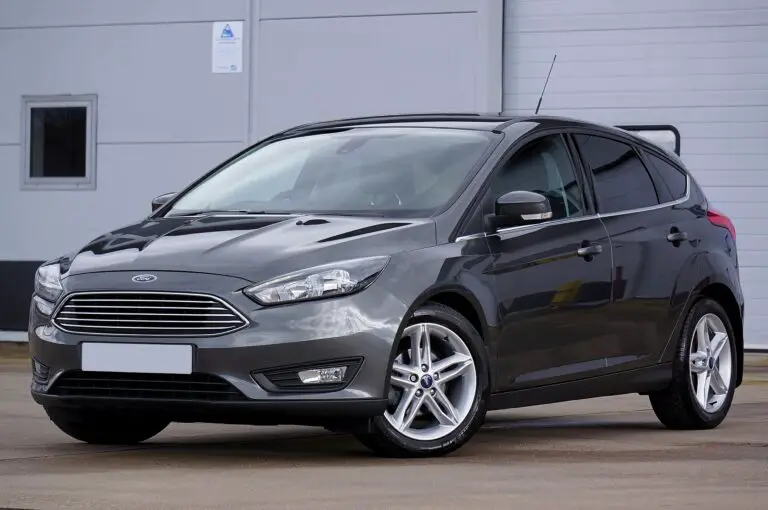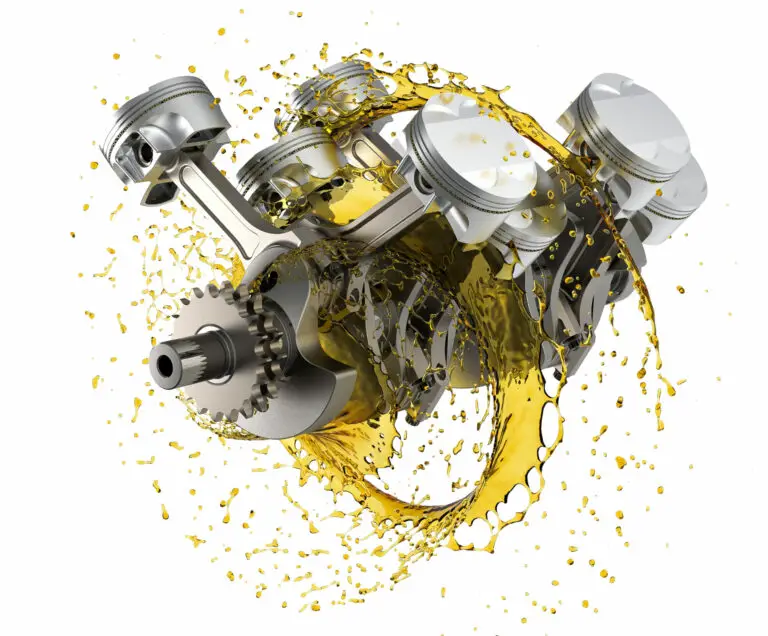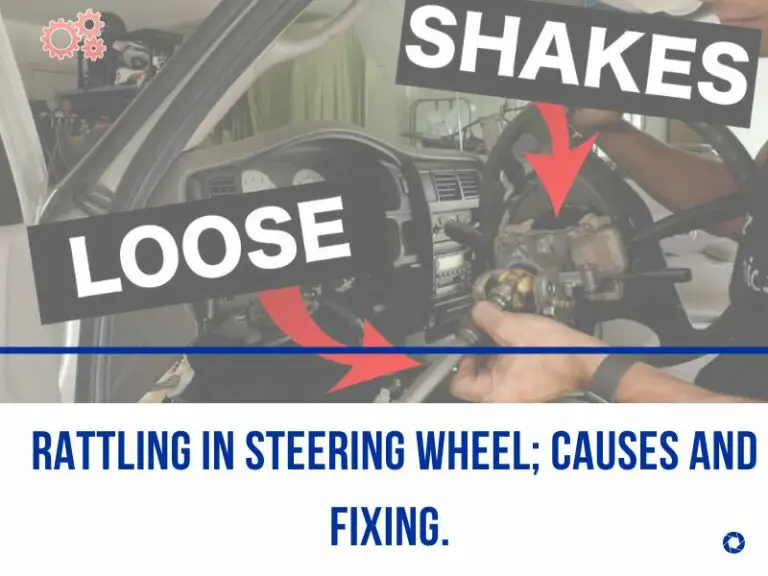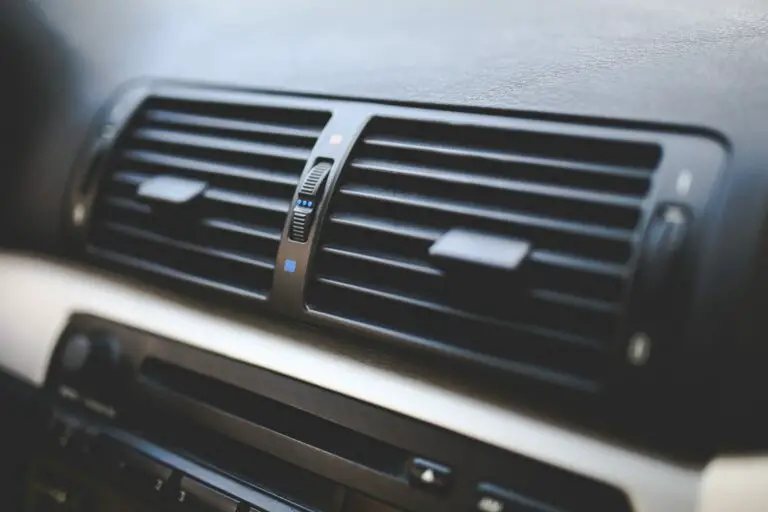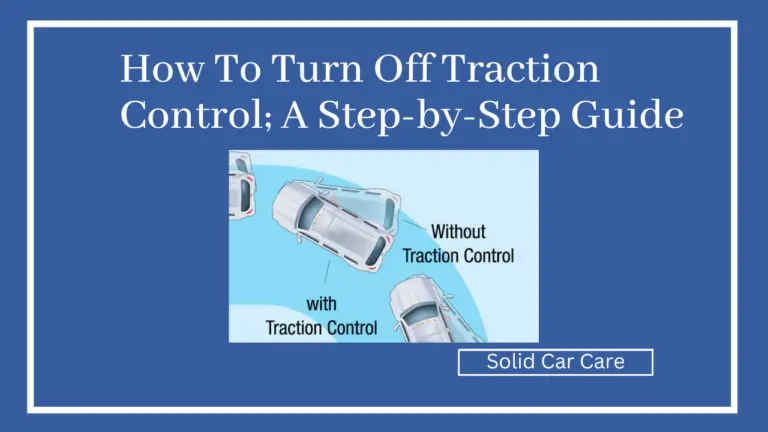Why Is My Traction Control Light Staying ON? Everything You Need To Know
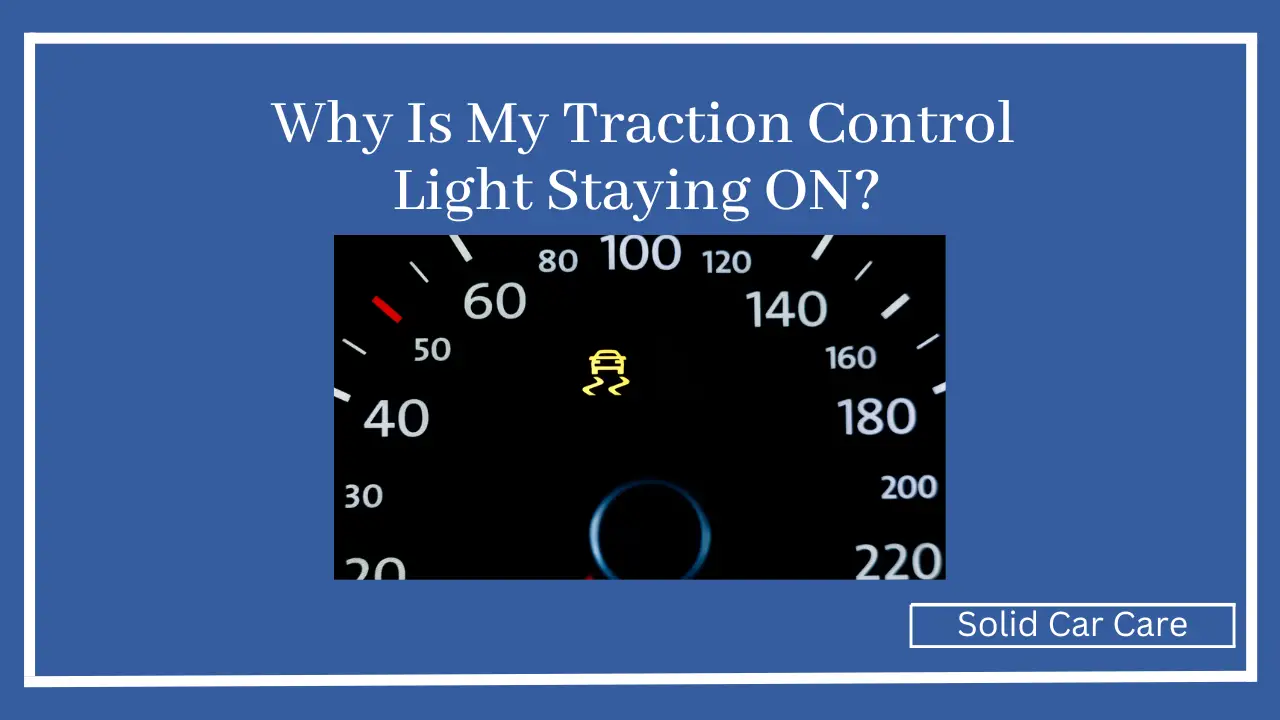
Quick Read; The traction control light may stay on due to issues like faulty wheel speed sensors, ABS system problems, wiring faults, or a malfunction within the traction control system. Diagnose the cause to ensure proper vehicle stability and safety.
Modern vehicles come equipped with advanced safety features, and the traction control system is a vital component that ensures stability and grip while driving. If you’re puzzled by the traction control light staying on in your vehicle, fear not – in this comprehensive guide, we’ll unravel the reasons behind this issue and provide insights into resolving it effectively.
Table of Contents
What is a Traction Control System?
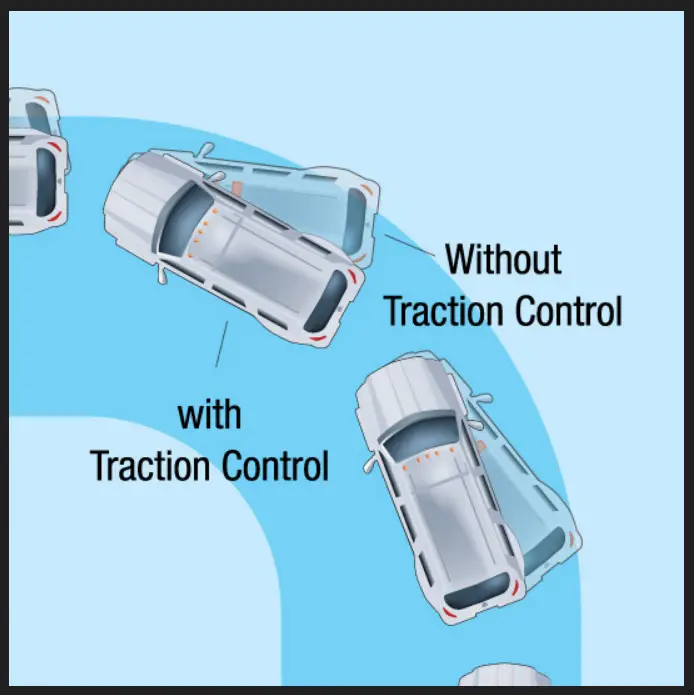
A Traction Control System (TCS) is an automotive technology designed to help improve a vehicle’s traction and stability by preventing excessive wheel spin during acceleration. It’s a subsystem of the vehicle’s electronic stability control (ESC) system and is especially useful in situations where the road surface is slippery, such as on wet or icy roads.
The Traction Control System works by monitoring the rotational speed of each wheel through wheel speed sensors. Suppose the system detects that a particular wheel is spinning faster than the others (indicating loss of traction). In that case, it intervenes to reduce engine power or apply braking force to that specific wheel. This action helps transfer power to the wheels with better traction, thereby minimizing wheel spin and improving overall vehicle stability.
What are the Benefits of Traction Control System?
Enhanced Traction: By reducing wheel spin, the TCS helps maintain better traction on slippery surfaces, which can prevent skidding and loss of control.
Improved Acceleration: TCS allows the driver to accelerate more confidently on slippery roads, as it prevents excessive wheel spin that can lead to a loss of control.
Better Stability: The system contributes to the vehicle’s overall stability by preventing wheel spin and maintaining a balanced distribution of power among the wheels.
Reduced Tire Wear: By preventing unnecessary wheel spin, the TCS can help extend the lifespan of tires by reducing wear caused by aggressive acceleration.
Safer Driving: TCS can assist drivers in maintaining control in challenging road conditions, potentially reducing the risk of accidents caused by loss of traction.
Integration with Other Systems: TCS is often integrated with other safety and stability systems, such as anti-lock braking systems (ABS) and electronic stability control (ESC), to provide comprehensive vehicle stability and control.
It’s important to note that while Traction Control Systems are beneficial in many scenarios, they might not be as effective on extremely icy or slippery surfaces, where traction is severely compromised. In such cases, specialized winter tires and cautious driving are still essential for safety.
Why is my traction control light staying on?
If your traction control light is staying on in your vehicle, it could indicate a potential issue with the traction control system or another related system. Here are some common reasons why the traction control light might remain illuminated:
- System Malfunction
A malfunction within the traction control system itself could be causing the light to stay on. This could be due to a faulty sensor, a wiring issue, or a problem with the control module.
- Wheel Speed Sensor
The traction control system relies on wheel speed sensors to monitor the speed of each wheel. If one or more of these sensors is malfunctioning or sending incorrect signals, the system may interpret it as a loss of traction.
- ABS System Issues
The traction control system often shares components with the anti-lock braking system (ABS). Problems within the ABS system, such as a faulty ABS sensor, could trigger the traction control light.
- Faulty Traction Control Switch
Some vehicles have a switch that allows you to manually disable the traction control system. If this switch is stuck or malfunctioning, it could keep the light on.
- Low Fluid Levels
Some vehicles use the brake fluid level as an indicator for traction control. If your brake fluid is low, it could trigger the light.
- Other System Malfunctions
Sometimes, issues with other vehicle systems, such as the engine management system or transmission, can lead to the traction control light being illuminated.
- Temporary Conditions
In some cases, the traction control light might come on temporarily due to factors like abrupt acceleration, sudden steering maneuvers, or slippery road conditions. If the light turns off after a short while, it might not necessarily indicate a malfunction.
How To Turn Off Traction Control; A Step-by-Step Guide
solidcarcare.com
Why did my traction control and check engine light come on?
The simultaneous illumination of the traction control and check engine lights indicates a potential issue affecting both the vehicle’s engine performance and its traction control system. This could be due to a range of factors such as a malfunctioning sensor, a problem with the engine’s performance, issues with the anti-lock braking or stability systems, or a wiring problem.
It’s advisable to have the vehicle diagnosed by a qualified mechanic or using a diagnostic tool to identify the specific issue triggering both lights. Prompt attention helps ensure the vehicle’s safety and performance are maintained.
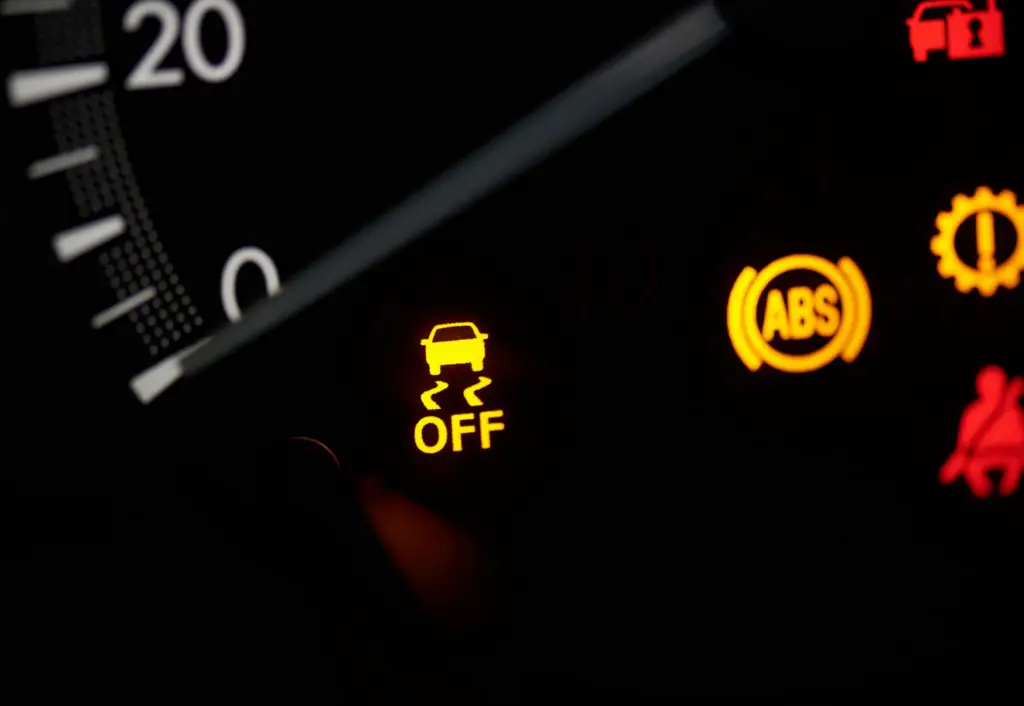
How to fix the traction control light?
Fixing the traction control light depends on the underlying cause of the issue. Here are some steps you can take to address the problem and potentially turn off the traction control light:
- Check for Obvious Issues:
- Ensure that your vehicle’s emergency brake is fully disengaged.
- Check the brake fluid level and ensure it’s within the recommended range. Low brake fluid levels can sometimes trigger the traction control light.
- Restart the Vehicle:
- Sometimes, a temporary glitch in the system can trigger the light. Turn off the engine, wait for a minute, and then restart the vehicle to see if the light turns off.
- Check Wheel Speed Sensors:
- The traction control system relies on wheel speed sensors. If one or more sensors are faulty, it can trigger the light. A mechanic can use diagnostic tools to identify which sensor is causing the issue.
- Inspect ABS System:
- As the traction control system is often integrated with the ABS, issues with the ABS can trigger the traction control light. Have the ABS inspected by a qualified mechanic.
- Address Wiring or Connector Issues:
- Inspect the wiring and connectors related to the traction control system. Damaged wiring or poor connections can cause sensor readings to be inaccurate.
- Reset the System:
- Disconnecting the vehicle’s battery for a few minutes can sometimes reset the system and turn off the traction control light. However, this might also reset other settings, so be prepared for that.
- Visit a Professional Mechanic:
- If the above steps don’t resolve the issue, or if you’re uncomfortable diagnosing and fixing the problem yourself, you should take your vehicle to a qualified mechanic.
- A mechanic can use diagnostic tools to identify the specific issue triggering the light and perform the necessary repairs.
Remember that the traction control system is an important safety feature, and its proper functioning contributes to the stability of your vehicle. If the light remains on or you notice any other unusual symptoms while driving, it’s best to have your vehicle inspected by a professional to ensure all safety systems are working as intended.
Given the potential safety implications of a malfunctioning traction control system, it’s recommended to have your vehicle inspected by a qualified mechanic as soon as possible if the traction control light stays on. They can diagnose the issue using diagnostic tools and address any necessary repairs to ensure your vehicle’s stability and safety systems are functioning correctly.
How does the traction control effect engine?
Traction control affects the engine by modulating its power output to prevent excessive wheel spin and improve vehicle stability in slippery conditions. When the system detects that one or more wheels are losing traction (spinning faster than the others), it takes the following steps to control the engine’s power output:
- Throttle Reduction: The traction control system can communicate with the engine control module (ECM) to reduce the amount of throttle (accelerator pedal) input. This limits the engine’s power output and helps prevent the wheels from spinning.
- Ignition Timing Adjustment: The system can adjust the timing of the engine’s ignition spark to reduce power delivery to the wheels. This can help control wheel spin and improve traction.
- Fuel Injection Adjustment: Traction control can also temporarily reduce the amount of fuel injected into the engine cylinders. This decreases the engine’s power output and reduces the likelihood of wheel spin.
By reducing engine power output in situations where wheel slip is detected, the traction control system helps maintain better control over the vehicle’s movement and prevent skidding or loss of control. It’s important to note that while traction control enhances safety, it can also affect acceleration in slippery conditions due to the power reduction aimed at preventing wheel spin.
How To Turn Off Traction Control Without Button?
solidcarcare.com
Conclusion
A traction control light that remains on requires prompt attention to maintain your vehicle’s safety and functionality. By understanding common causes such as wheel speed sensor problems, ABS module malfunctions, tire-related issues, and more, you can take informed steps to diagnose and resolve the issue. Prioritizing regular vehicle maintenance and seeking professional assistance when needed ensures that your vehicle’s traction control system operates optimally, enhancing your driving experience and safety on the road.

